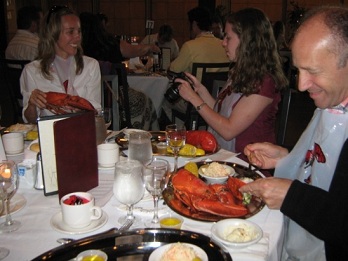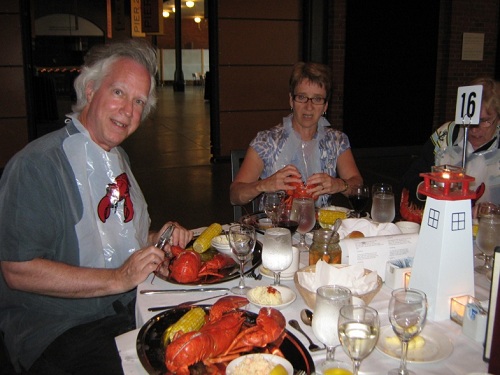| Fall 2010 |
||
| PREVIOUS | PAGE 1 | ||
| How to Live Life like a Lobster
Kathy Nolan
|

|
|
This is an anatomy/analogy lesion that can be used with your students. You must buy TWO LIVE lobsters, one male and one female. Wrap them up in wet newspapers, and refrigerate. Do NOT freeze or put on ice! They should keep several hours or even overnight before your presentation. The element of surprise is essential. Put the lobsters in a bag and inconspicuously sneak them into the classroom. When the students look like they are nodding off, whip out the lobsters. Then point out these seven important points:
When you have concluded your anatomy/analogy lesson, you can welcome the students up to look at the differences between the genders. The first set of swimmerets in the male is harder than the first set in the females. They can also observe the movement of the many appendages, including the mouth pieces such as the mandibles and maxillipeds. Now wrap up the lobsters, take them home and cook them for a splendid feast!
The two Larry’s eating lobster at the ABLE banquet in Halifax, Nova Scotia, June 2010
|
||
| PREVIOUS | PAGE 1 | ||

